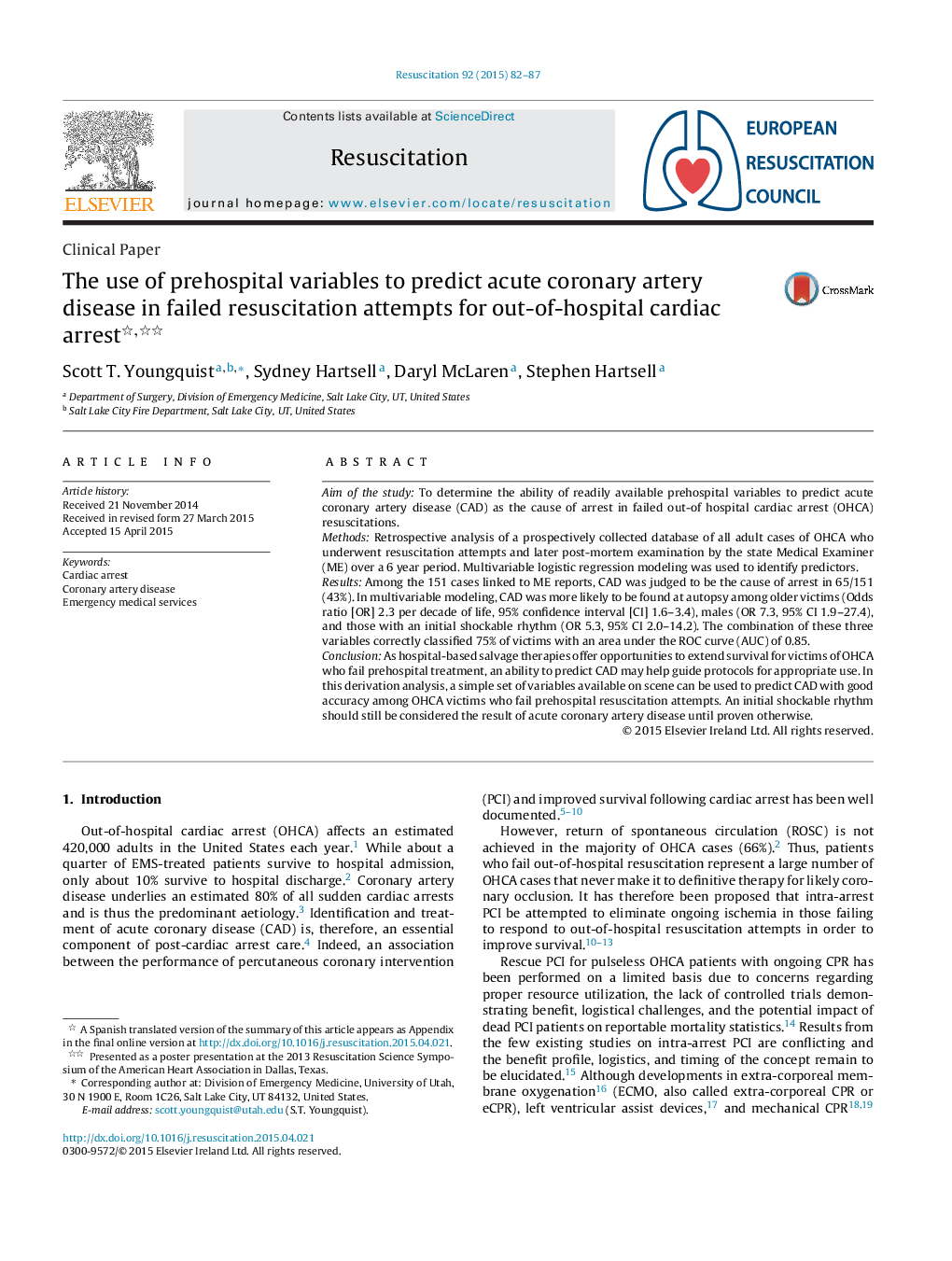| Article ID | Journal | Published Year | Pages | File Type |
|---|---|---|---|---|
| 5997811 | Resuscitation | 2015 | 6 Pages |
Aim of the studyTo determine the ability of readily available prehospital variables to predict acute coronary artery disease (CAD) as the cause of arrest in failed out-of hospital cardiac arrest (OHCA) resuscitations.MethodsRetrospective analysis of a prospectively collected database of all adult cases of OHCA who underwent resuscitation attempts and later post-mortem examination by the state Medical Examiner (ME) over a 6 year period. Multivariable logistic regression modeling was used to identify predictors.ResultsAmong the 151 cases linked to ME reports, CAD was judged to be the cause of arrest in 65/151 (43%). In multivariable modeling, CAD was more likely to be found at autopsy among older victims (Odds ratio [OR] 2.3 per decade of life, 95% confidence interval [CI] 1.6-3.4), males (OR 7.3, 95% CI 1.9-27.4), and those with an initial shockable rhythm (OR 5.3, 95% CI 2.0-14.2). The combination of these three variables correctly classified 75% of victims with an area under the ROC curve (AUC) of 0.85.ConclusionAs hospital-based salvage therapies offer opportunities to extend survival for victims of OHCA who fail prehospital treatment, an ability to predict CAD may help guide protocols for appropriate use. In this derivation analysis, a simple set of variables available on scene can be used to predict CAD with good accuracy among OHCA victims who fail prehospital resuscitation attempts. An initial shockable rhythm should still be considered the result of acute coronary artery disease until proven otherwise.
